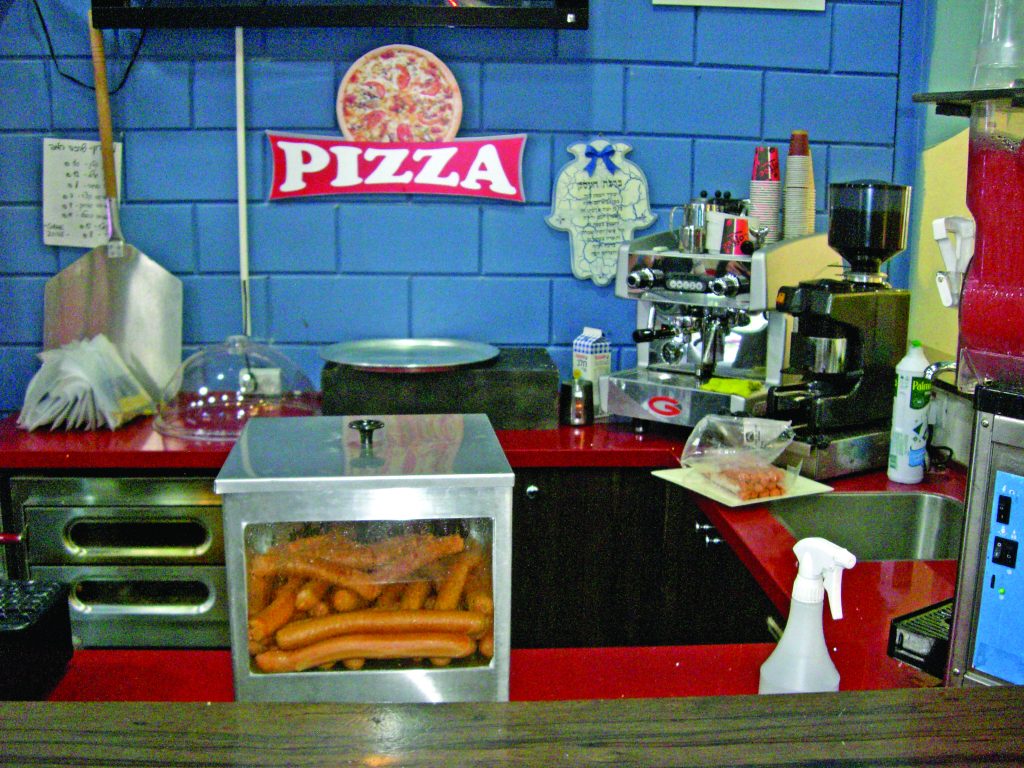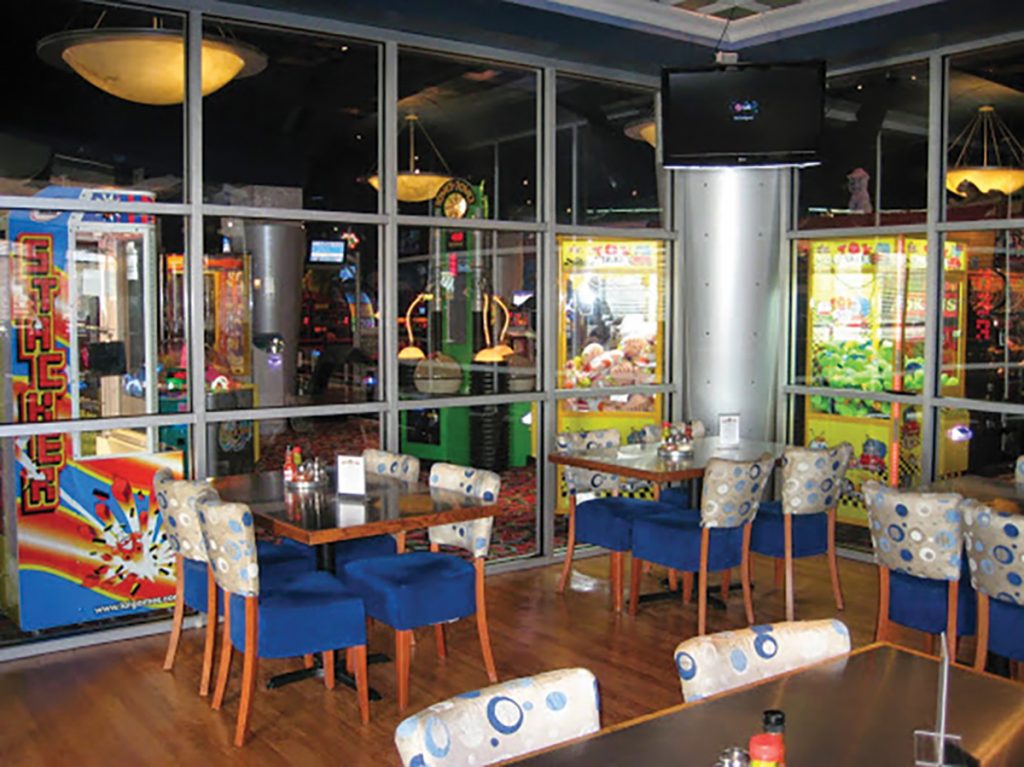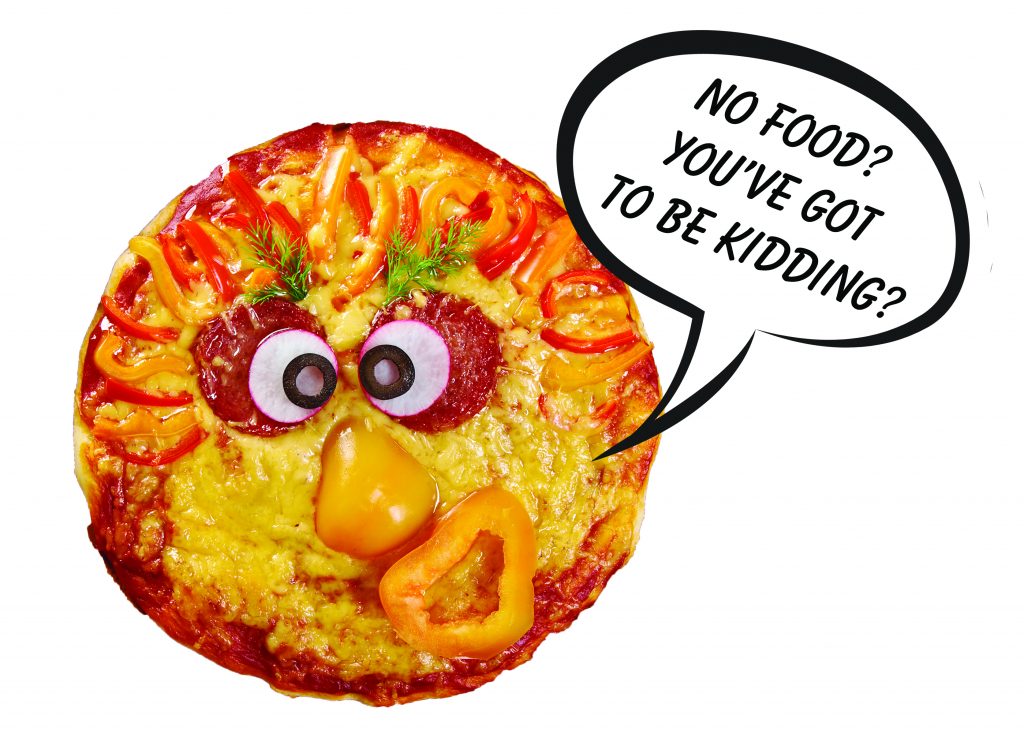Maximizing Facility Revenue – Part Five
Offering Food Means You Don’t Leave Money on the Table!

by Frank Seninsky, President/CEO Amusement Entertainment Management (AEM) & Alpha-Omega Amusements & Sales
[Editor’s note: For a first-time read or a refresher, Part One can be found in the February 2016 issue, Part Two in March, Part Three in June, and Part Four in July. All are available online at the RePlay website: www.replaymag.com/current_issue/frank.html.]
If I’m working with someone who currently doesn’t offer food in their facility or outsources their food, I try to start off rather slowly on the financial reasons why food is so important to customer satisfaction, length of stay, repeat visitation and thus the bottom line. Then I hit them with, “You’ve got to be kidding?”
Step 1 is to reduce the fear factor of having a pretty good food operation.
Step 2 is to get the books to properly reflect food revenues.
Step 3 is to project how much potential food revenue is not being realized.
Many entertainment centers I work with don’t set up their accounting books properly. For example, they don’t break out a portion of the actual food component revenues from the total birthday party/group/event revenues. In addition, the cost of sales of the food component must also be allocated. When you know those numbers, you can then start to analyze the percentage of food revenue vs. total revenue and determine if you are above or below the industry benchmark.
Starting with a Birthday Party Analysis
Let’s focus on birthday party revenue, for starters. You need to come up with a standard “discount” factor across the board for all of the attractions, food and games under the assumption that a birthday party package is nothing more than a group discount package. When you do that, you can put almost all of that party money into the proper categories so you know what each category and individual component (laser tag, as an attraction example) of your facility is grossing.
Let’s say you charge $15/child and you give each child a $5 game debit card or $5 in game tokens. Choose a discount ratio and use it across the board. I like to use a 20% discount and have for the past 40 years. That means that $4 of the $15 goes into the Game Revenue category. Now you also have to know your cost of sales for a child who plays the credits on that $5 game card and winning tickets and merchandiser prizes. I set my ticket payout percenages and win percentages so that the average cost of sales is 20 percent or $1 from that $5 game card (taking into account that the cost of sales is zero for video, air hockey, kiddie rides, pinball-games that are not played for prizes).
Now Do the Same with the Birthday Party Food
Let’s say you’re going to give two slices of pizza, or you’re giving the party two pies for the 12 children. You use the same 80% discount ratio and apply it to determine how much of the remaining $11 (of the $15) goes to your food revenues. Your cost of sales for food can be calculated, for example, at 33% of your retail food pricing. For example, a pizza sells for $12 ($1.50/slice) and it costs you $4 ($0.50/slice) in product to make it.
The smallest percentage of revenue I could tolerate for food in an FEC would be 15% . If our facility grosses a million dollars a year, the earnings on food would be $150,000. That’s leaving money on the table, but to be fair, some FECs have food restrictions in their leases or cannot put in a regular kitchen.
A benchmark to shoot for is to attain food revenues of 20-25 percent, which is par for the main course. Of course, this depends on what type of facility you’re running. As an example, in a Dave & Buster’s adult-style model with alcohol, food and beverage revenue would be 50 percent of the total gross and food would be 40 percent of food and beverage (F&B) revenue.
Let’s not get carried away here. Again you need to look at your business model – whether food is 20, 25, 33, 40 percent of your revenue or whatever it may be – you have to look at your potential and where you want to go because food has your highest cost of sales when compared to games and other attractions. I bring food product costs in at about 30 percent or maybe a bit lower, but 30 percent is a good benchmark number to stay under. The best I’ve seen in the industry is 25-26 percent from high volume pizza FECs that do not waste an ounce of product.
For the people who are afraid to work with food, now we get into the different options available like the Quik n’ Crispy greaseless fryers. You can probably generate $100,000 to $150,000 per year out of one unit with no hood, no anything that would require a food license. Considering you’re doing birthday parties and everything, $100,000-$150,000 of food revenue out of a million-dollar gross operation is pretty easy to do.

Still Afraid of Food?
Aside from a phobia, I can’t see how anybody would be afraid of buying frozen food, putting it in a freezer, using it as you need it, heating it up in a Quik n’ Crispy (QNC) oven and taking in $100,000-$150,000 a year with one employee and maybe two during a peak Saturday. To me, it’s a no brainer. Anyone who goes to the next level and builds out a “normal” kitchen, you’re then talking about $200,000 to $300,000 in food revenues per $1 million gross revenues.
Going back to the easy way, the investment is cheap. You can put together a whole kitchen for $20,000. I’ve been able to assemble a 10’ x 10’ kitchen with a QNC oven, soda fountain, freezer and two sinks for about $20,000. I use $20,000 as the minimum, but you can get a bigger kitchen, buy some used equipment and put a $40,000- to $50,000-kitchen together. Keep in mind that these are “one-time” investments in an asset that lasts 10 years and keeps on producing profits.
When we work with a facility, we design the whole kitchen with the architect and source out all of the components unless our client takes on this responsibility. An AEM feasibility study by Jerry Merola will give you the square footage for the kitchen and break down all the components and what they cost so you have a budget and know what you need for every square foot of the facility (including air space).
In some cases, I review the feasibility/business plan done by another independent, third party or one written by the client themselves and then adjust the costs and footprints accordingly.
Then the fun part starts, working with layouts, right-sizing the kitchen vs. how much dollar volume it’s projected to earn based on comparisons to dozens of other “actual financial statements” of similar facilities in similar markets.
Most of my clients with average size FECs (15,000-20,000 square feet) go out and find used kitchen equipment. Restaurants go out of business like crazy, we all know that. If you narrow it down, you find that about 60% of restaurants fail the first year so that means there is a lot of used restaurant equipment for sale out there. (Obviously many that didn’t survive must not have attended Birthday University!)
I’ve noticed that a lot of the smaller game centers (bounce houses, for example) run without food; certainly the trampoline park industry was initially set up without a standard food component. Some tramp parks have only vending machines.
I think there are thousands of locations that outsource food. I run into people where they have “Joe’s Pizza” down the street or in the same strip center delivering food at a discounted rate. And the scary thing is that the FEC owners think it’s great! (In fairness, some leases prohibit the FEC from selling food, sometimes pizza specifically, as another tenant has that exclusivity.)
Keep in mind these locations charge $15 per child for the party (12 kids) and then have to go buy two discounted pizzas for $10 each. (That’s $20 out of a $180 party.) It would only cost them $8 if they made the pizza themselves (an additional profit of $1/child). They just threw away $12 out of the party money. Multiply that by the number of parties hosted each year. Also, what about the a-la-carte pizza purchases from each of the 67,000 customer visits the business generates. Let’s do the math: 67,000 x $15 = $1 million! Yes, serious money is being left on the table!

Seating…Yes, It’s Important
If you want people to stay longer and spend more money, seating is a good start. Your guests want (and in some cases, need) to sit and watch the activities or their kids. If you don’t set up the seating in the right place to cater to this “need,” you can not only kill your food revenue, but unconsciously create a miserable experience for those guests. No one wants to sit in some nook or cranny that they know is an undesirable space. They want to be “where the action is!” If they wanted quiet, they would go to the library!
We just worked with a guy who wanted a very sophisticated parents’ lounge in prime space with special food service, sushi, beer/wine/liquor and everything. He put it in an enclosed glass room on all sides so the parents could avoid hearing the outside noise and watch their kids in comfort. Of course, that parents’ lounge cost a lot more money, but it’s very nice and a central part of the FEC.
AEM assisted with the creation of the Ultimate California Pizza Fun Zone in Myrtle Beach, S.C. (see the FEC Profile in the September 2015 issue, page 57). They had the idea to install a clear wall (using a high-tech plastic that’s totally safe and easy and clean) between the “fine dining” section and the activities. The parents love it! The client spent a bit more money to build that beautiful clear wall, but the result was tremendous.
Studying Food Revenue and How $ Relates to Seating
If you’re designing a small 10 x 10’ kitchen, you can do a throughput analysis of revenue. Bear with me on the math. Let’s take $150,000 a year, but since it’s easier to divide by 50 instead of 52, let’s say you’re looking at $3,000 a week. Your peak day is Saturday at 33% of weekly revenue so that means you generate $1,000 in food revenue on a Saturday. If you’re open 10 major hours (you might be open more, but it’s easy to divide by 10 in your head), you’re doing $100 per hour in food sales, not even counting the birthday party food revenue component.
Go back and look at your average casual check ($4) to see how many people are coming through (throughput), and calculate that you have 25 people per hour buying food. Have a staff person time how long each person stays seated while eating their food and how long it is until the last person in the small group leaves the table. Say the result is an average of 12 minutes. This helps you get a feeling for how much seating and space you need for strictly snack bar dining. You can always double that space to see if you can also double the revenue from $100 per hour to $200. Studying and experimenting with seating can be both profitable and fun at the same time.
Birthdays
Now let’s look at the birthday party food component and start by analyzing one party room. Let’s say you have an average of 10 kids per party plus eight parents. Go back to that $15-per-child party where $4 is food and beverage (10 x 4 = $40). The parents will also purchase food and drinks (so add $24 using $3 since the parents usually eat some of the kids’ leftover food). The total per party is now $64. Let’s assume that you do one party per hour in this room for a total of six hours on a Saturday. That means you’ve got $64 x 6 = $384 in food revenue from one party room.
If you have two party rooms, you’re bringing in $762 on Saturday and this is done without any additional seating. (That’s $762 x 50 = $38,100 annually.) Do the same exercise for birthday parties on other days of the week and I think you will soon discover that your small kitchen is a gold mine.
That’s why $150,000-$200,000 per year seems so low to me. I truly believe that some FECs could do that just by getting a hot dog cart like they have on the street. You could probably do $100,000 just selling hot dogs and water/soda to your customers as long as what you’re offering is decent.
Since we’ve covered Steps 1-3 in this installment, we’ll save the rest of my thoughts on food and FECs for Part 6. I think you must agree that offering food is a great way to increase location revenues and that it’s a valuable component of today’s FEC. Hey, maybe the F stands for Food!
Frank Seninsky is President of the Alpha-Omega Group of companies, which includes a consulting agency, Amusement Entertainment Management (AEM), two nationwide revenue sharing equipment suppliers, Alpha-Omega Amusements, Inc. and Alpha-BET Entertainment, and Alpha-Omega Sales, a full line game and related equipment distributor. A frequent columnist and speaker, he’s set up over 600 game rooms in his 47-year career, and has also held leadership positions in the AMOA and IALEI. He’s a founding member of Foundations Entertainment University and authors The Redemption & FEC Report e-newsletter and a blog at www.frank-thecrank.com. Frank can be reached by phone at 732/254-3773 or by email at [email protected]
(the website: is www.AEMLLC.com).


1 Comment
Pingback: Maximizing Facility Revenue – Part Five - Frank 'the Crank' Seninsky Blog